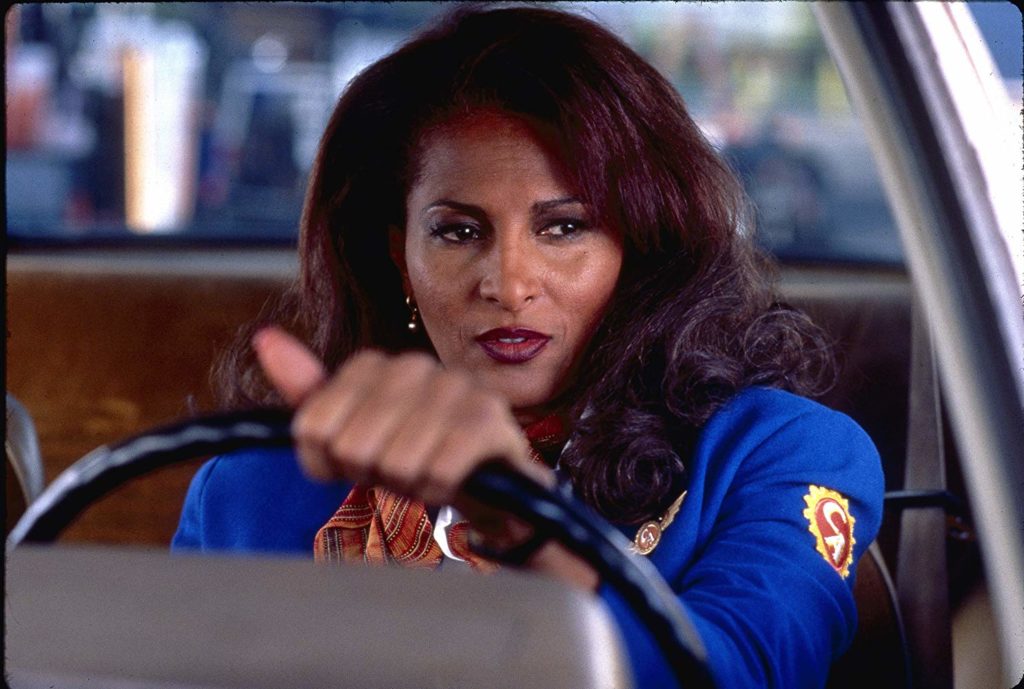Recommended Movie: “Jackie Brown”
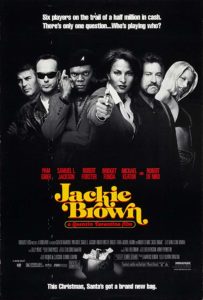 “Talk badly about me, but talk about me”. This famous phrase, attributed to a deceased Bahian politician, may not be Quentin Tarantino’s philosophy of life, but it is his reality. It would be unfair, however, to say that one only speaks ill of him. On the contrary, his films are either loved or hated with the same passion, but without any unanimity. Perhaps, by this capacity of arousing the emotions of the viewers, it is that the controversial mix of director, producer, writer and actor is a star, with its own brilliance, in the constellation of Hollywood. Fleeing the commonplace, I do not usually cling to a director, but rather to each work individually. By having a different perception for each one of his works, I consider “Jackie Brown” the best film of Tarantino. Fans of “Pulp fiction”, please leave to throw the stones at someone worthwhile.
“Talk badly about me, but talk about me”. This famous phrase, attributed to a deceased Bahian politician, may not be Quentin Tarantino’s philosophy of life, but it is his reality. It would be unfair, however, to say that one only speaks ill of him. On the contrary, his films are either loved or hated with the same passion, but without any unanimity. Perhaps, by this capacity of arousing the emotions of the viewers, it is that the controversial mix of director, producer, writer and actor is a star, with its own brilliance, in the constellation of Hollywood. Fleeing the commonplace, I do not usually cling to a director, but rather to each work individually. By having a different perception for each one of his works, I consider “Jackie Brown” the best film of Tarantino. Fans of “Pulp fiction”, please leave to throw the stones at someone worthwhile.
Jackie Brown (Pam Grier) is a middle-aged black woman who works as a stewardess in a low-cost Mexican airline. To earn a few extra bucks, Jackie sometimes doubles as a carrier-pigeon for a small gun dealer, Ordell Robbie (Samuel L. Jackson), bringing him money from a ghost account in Mexico. One of these times, she is caught by the police carrying fifty thousand dollars. As in Uncle Trump’s land it is illegal to bring more than ten thousand dollars without filing for customs, our heroine has gone to jail.
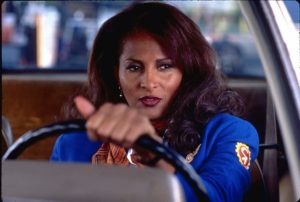 In addition to Jackie, Ordell had problems with another employee of his, Beaumont Livingston (Chris Tucker). Young and irresponsible, Beaumont had been arrested driving drunk with an illegal weapon in the car. Adding this to his background, he would certainly be given ten years’ imprisonment, which he would only get away with if he handed over his boss. Ordell added two and two, and then dispatched Beaumont for the better.
In addition to Jackie, Ordell had problems with another employee of his, Beaumont Livingston (Chris Tucker). Young and irresponsible, Beaumont had been arrested driving drunk with an illegal weapon in the car. Adding this to his background, he would certainly be given ten years’ imprisonment, which he would only get away with if he handed over his boss. Ordell added two and two, and then dispatched Beaumont for the better.
To get Jackie out of jail, Ordell uses the services of a bail agent, a sort of legal dispatcher, who takes care of people on parole. The agent is Max Cherry (Robert Foster), a fifty-something about to retire, who is taken by an immediate and strange attraction to Jackie.
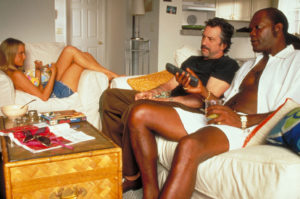 Ordell continues to try to keep his business in order, and now has the help of an old prison mate, Louis Gara (Robert De Niro). The new employee still suffers from a long period behind the bars and the vision of the young girlfriend of Ordell does not help much its retooling. Melanie (Bridget Fonda), young and beautiful, has only two pleasures in life: watching TV and drugging herself.
Ordell continues to try to keep his business in order, and now has the help of an old prison mate, Louis Gara (Robert De Niro). The new employee still suffers from a long period behind the bars and the vision of the young girlfriend of Ordell does not help much its retooling. Melanie (Bridget Fonda), young and beautiful, has only two pleasures in life: watching TV and drugging herself.
While still being pressured by federal police to hand over Ordell, Jackie suffers veiled threats from the boss himself. Without a viable alternative, she decides to execute a miraculous plan to deceive everyone and run away with the money from the dealer.
 This movie is a beautiful exercise of suspense, very usual in police movies of all time. Some aspects, however, make “Jackie Brown” above average. The most important was the choice of the cast, which supports the whole plot.
This movie is a beautiful exercise of suspense, very usual in police movies of all time. Some aspects, however, make “Jackie Brown” above average. The most important was the choice of the cast, which supports the whole plot.
The best-known figures, Samuel Lee Jackson, Robert de Niro, Bridget Fonda, Michael Keaton and Chris Tucker took supporting roles. Jackson embodies the firearms dealer with a ponytail, goatee and ghetto accent. Niro, with the face of someone who appeared at the very last minute, makes the ex-convict. Keaton is the federal agent who arrests Jackie. Bridget, beautiful and talented, is great as the drugged surfer girl while Chris Tucker fulfills his eternal role of talking cricket, and disappears at the beginning of the movie.
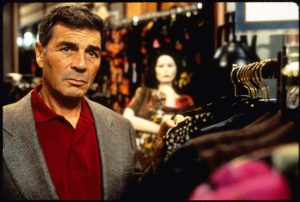 The main roles remain with Pam Grier and Robert Foster, great actors who for three decades only played secondary roles in movies and TV. Foster’s most notable role was his debut film, “Reflections in a Golden Eye” with Elizabeth Taylor and Richard Burton.
The main roles remain with Pam Grier and Robert Foster, great actors who for three decades only played secondary roles in movies and TV. Foster’s most notable role was his debut film, “Reflections in a Golden Eye” with Elizabeth Taylor and Richard Burton.
If so far the blacks still have difficulties in the Oscar awards, at least Pam deserved the nomination for the Golden Globe, by its acting as Jackie. Also, for this film, Foster was nominated for an Oscar for Best Supporting Actor and Jackson won the Silver Bear for Best Actor at the Berlin Film Festival.
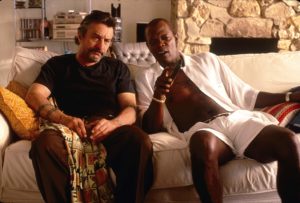 Another interesting artifice, that Tarantino had already used in “Pulp Fiction” is the conduction of the narrative. Most of the time, the story follows a linear narrative, with simultaneous events presented one after another (remember the “meanwhile, in the Hall of Justice…?). Tarantino subverts this logic, in a moment of suspense, when Ordell presses Jackie, and soon shows a sequence of facts in a mall. The same time interval is shown three times, always from a different point of view, resulting in a very original set.
Another interesting artifice, that Tarantino had already used in “Pulp Fiction” is the conduction of the narrative. Most of the time, the story follows a linear narrative, with simultaneous events presented one after another (remember the “meanwhile, in the Hall of Justice…?). Tarantino subverts this logic, in a moment of suspense, when Ordell presses Jackie, and soon shows a sequence of facts in a mall. The same time interval is shown three times, always from a different point of view, resulting in a very original set.
A third curious aspect of this film is the way violence is presented. Unlike the explicit and even banal way “Pulp Fiction” and other Tarantino movies present the violent acts, in “Jackie Brown” everything is more hidden, submerged. The death sequence of Chris Tucker’s character is the best example of this. Everything is shown at a distance, only confirming what the viewer had already anticipated. All the actions and reactions are unexpected, fleeing to the commonplace of “hit-and-took” cop movies.
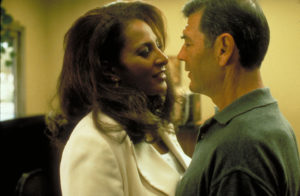 Also fleeing the pattern where everyone is young and perfect, as in margarine advertisement, Tarantino shows a beautiful case of love between mature people, who still cherish romantic fantasies – and have all the right to do so. Are shown also the often insurmountable barriers that people construct around themselves, that hinder to realize their innermost dreams and desires. I recommend it.
Also fleeing the pattern where everyone is young and perfect, as in margarine advertisement, Tarantino shows a beautiful case of love between mature people, who still cherish romantic fantasies – and have all the right to do so. Are shown also the often insurmountable barriers that people construct around themselves, that hinder to realize their innermost dreams and desires. I recommend it.

